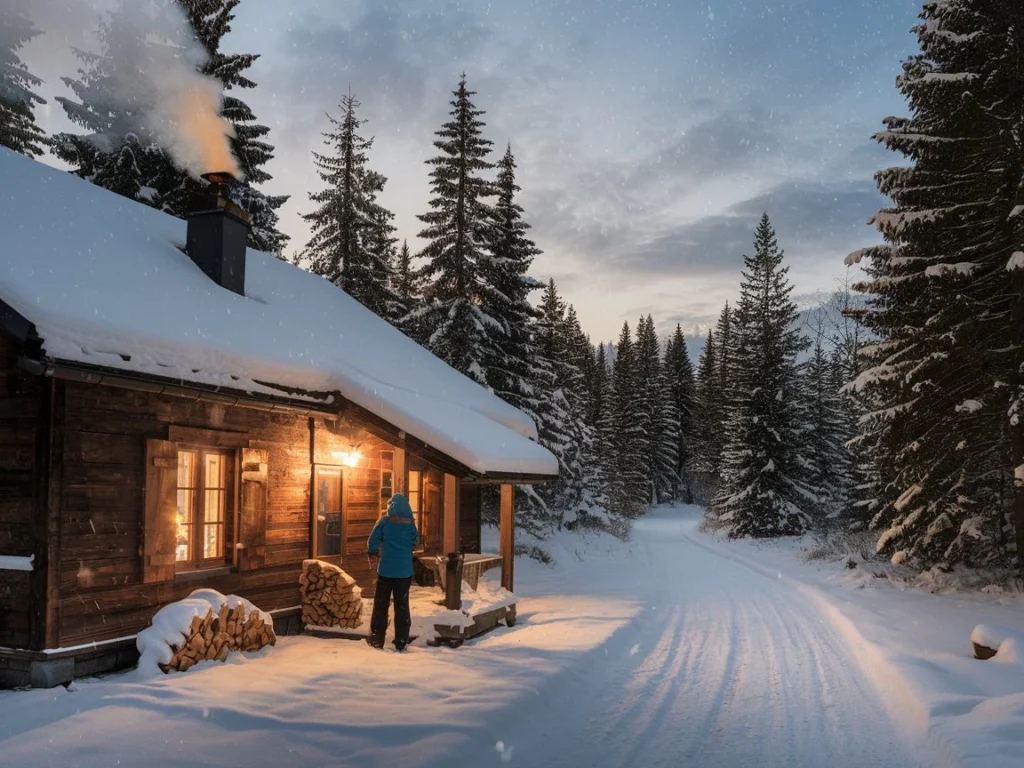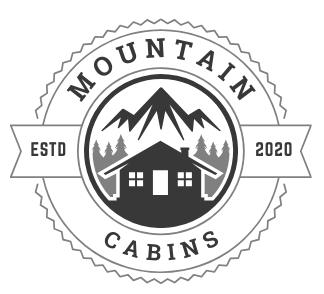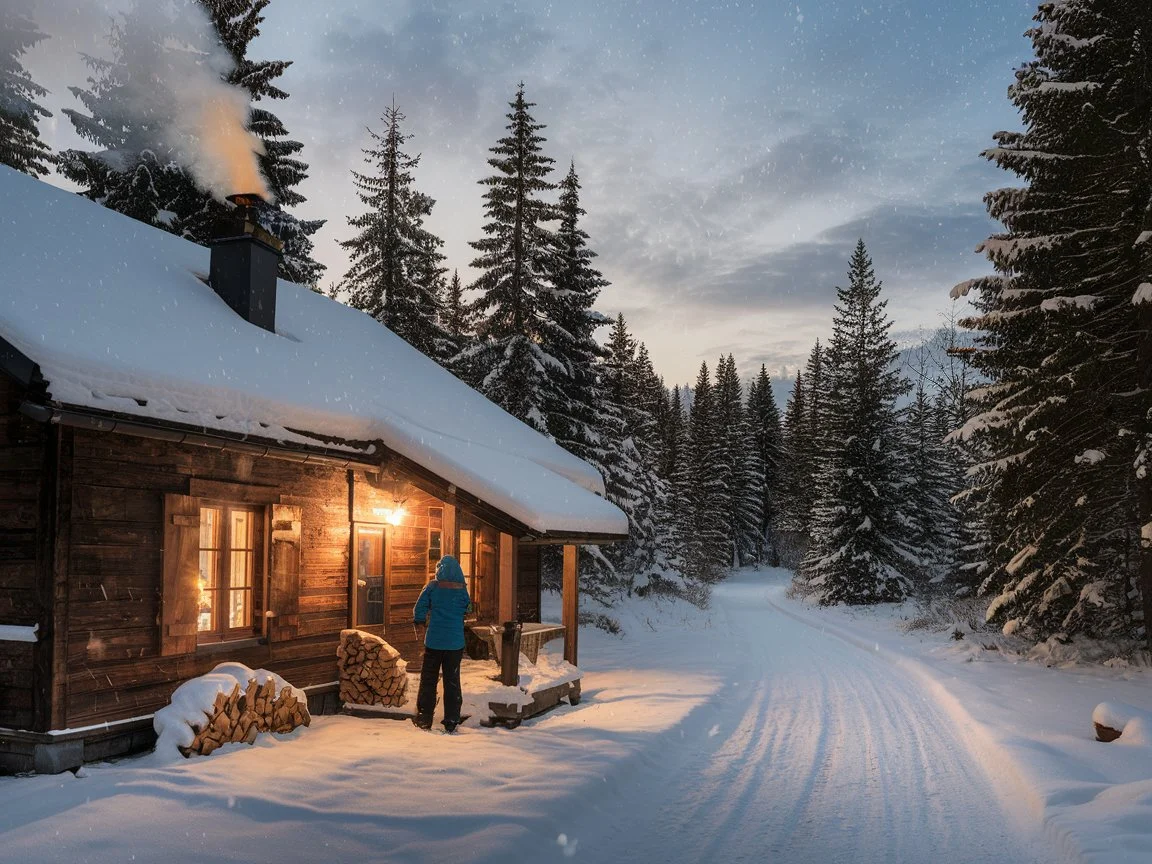
Introduction
There’s nothing quite like the magic of staying in a cozy cabin surrounded by a winter wonderland. The crisp mountain air, snow-covered trees, and the warmth of a crackling fire create the perfect setting for relaxation and adventure. Whether you’re prepare a romantic getaway, a family vacation, or a solo retreat, a winter cabin stay can be an unforgettable experience.
However, proper preparation is essential for ensuring a safe and enjoyable trip. Snowy mountain conditions can be unpredictable, and factors like extreme temperatures, road closures, and emergency preparedness should not be overlooked. From choosing the right cabin to packing the right gear, being well-prepared can make all the difference.
This guide will cover everything you need to know before prepare for a winter and heading to your winter retreat, including cabin selection, packing essentials, safety tips, fun activities, and emergency planning. By the end, you’ll be ready to fully embrace the beauty and tranquility of a snowy mountain escape.
1. Choosing the Right Cabin for a Winter Stay
Selecting the right cabin is one of the most important steps in planning a winter getaway. Not all cabins are designed for extreme cold and heavy snowfall, so it’s crucial to choose one that will keep you safe, warm, and comfortable during your stay.
Key Features to Look For: Insulation, Heating, Accessibility
When booking a winter cabin, prioritize these essential features:
- Proper insulation – A well-insulated cabin retains heat better and prevents drafts, making your stay more comfortable.
- Reliable heating system – Ensure the cabin has a functional heating source, such as a fireplace, wood stove, or central heating. If relying on a fireplace, confirm there’s enough firewood.
- Accessible location – Some cabins are located in remote areas with unpaved roads. If snowfall is expected, check if the roads are plowed regularly and if 4WD vehicles or snow chains are required.
Remote vs. Accessible Cabins (Pros and Cons)
Depending on the experience you’re looking for, you may choose a remote or easily accessible cabin:
- Remote cabins: Offer solitude, breathtaking scenery, and a true off-grid experience but may have limited amenities and require extra preparation.
- Easily accessible cabins: Typically closer to towns or ski resorts, offering modern conveniences and emergency assistance but may be busier and less private.
Checking for Emergency Supplies and Backup Power
Before booking, check whether the cabin is equipped with:
- Backup power sources – Some cabins have generators in case of power outages. If not, bring extra batteries and portable chargers.
- Emergency supplies – Verify that the cabin has basic emergency essentials like flashlights, blankets, a first-aid kit, and non-perishable food.
- Snow removal tools – Having access to shovels, ice melt, and a snowblower can be helpful in case of heavy snowfall.
Choosing the right cabin can set the tone for your entire winter getaway. Prioritizing safety, comfort, and accessibility will ensure a smooth and enjoyable stay.
2. Packing Essentials for Cold Weather
Packing the right gear is essential for staying warm, comfortable, and safe during your winter cabin stay. Cold temperatures, snow, and unexpected weather changes require thoughtful preparation to ensure you’re fully equipped for the trip.
Layered Clothing and Proper Winter Gear
Dressing in layers is the best way to stay warm while allowing flexibility as temperatures fluctuate. Here’s what to pack:
- Base layer: Moisture-wicking thermal underwear to keep sweat off your skin.
- Middle layer: Insulating clothing such as fleece or down jackets for warmth.
- Outer layer: A waterproof and windproof coat to protect against snow and wind.
- Accessories: Hats, gloves, scarves, and thermal socks to keep extremities warm.
- Footwear: Waterproof, insulated boots with good traction to prevent slipping on ice.
Emergency Supplies (Flashlights, Extra Blankets, First-Aid Kit)
Winter conditions can be unpredictable, so it’s important to bring emergency essentials, including:
- Flashlights and extra batteries – In case of power outages or navigating outside at night.
- First-aid kit – Stocked with bandages, antiseptic, pain relievers, and any necessary medications.
- Thermal blankets and sleeping bags – Essential for extra warmth in case of heating failure.
- Hand warmers and heat packs – Useful for keeping hands and feet warm in extreme cold.
Food, Water, and Backup Heating Sources
- Non-perishable food: Pack easy-to-prepare meals such as canned goods, granola bars, nuts, and instant soup in case of an emergency.
- Extra drinking water: If the cabin’s water supply is unreliable, bring bottled water or a filtration system.
- Backup heating sources: Consider bringing a portable propane heater (if safe for indoor use) and extra firewood if the cabin has a fireplace.
Being well-prepared with the right clothing, emergency supplies, and provisions will ensure a comfortable and stress-free winter cabin experience.
3. Safety Tips for Snowy Cabin Stays
Winter in the mountains is beautiful, but it can also be unpredictable. Snowstorms, icy roads, and freezing temperatures require extra caution to ensure a safe and enjoyable stay. Here are some essential safety tips to keep in mind.
How to Handle Road Closures and Extreme Weather
- Check weather forecasts – Before heading to your cabin, monitor the weather to anticipate snowstorms, icy conditions, or road closures.
- Carry snow chains or use a 4WD vehicle – Many mountain roads become slippery in winter. Snow chains or a vehicle with four-wheel drive can help navigate snowy terrain safely.
- Keep an emergency roadside kit – Pack jumper cables, a shovel, ice scraper, tow rope, and sand or kitty litter (for traction if your car gets stuck).
- Have a backup route – Some mountain roads may close due to snowfall, so know alternative routes before you travel.
Fire Safety and Heating Precautions
- Inspect fireplaces and wood stoves – Before lighting a fire, check that chimneys are clear and that the flue is open to prevent smoke buildup.
- Use space heaters safely – Keep portable heaters at least three feet away from flammable items like curtains and blankets. Never leave them unattended.
- Stock up on firewood – If the cabin relies on a fireplace, ensure you have enough dry firewood to last your stay.
- Check smoke and carbon monoxide detectors – Make sure detectors are functional, as heating systems and fireplaces can pose a carbon monoxide risk.
Dealing with Wildlife in the Winter
- Store food securely – Bears may hibernate, but other wildlife like raccoons, foxes, and rodents can still be active in winter, searching for food. Keep all food sealed and indoors.
- Avoid feeding wildlife – Even in winter, feeding animals can be dangerous and disrupt their natural behavior.
- Be cautious on trails – Some animals, like moose, can be more aggressive in the winter. Always observe from a distance and avoid disturbing wildlife.
By taking these precautions, you can enjoy the beauty of a snowy mountain getaway while staying safe and prepared for any challenges that may arise.
4. Fun Activities to Enjoy in a Winter Cabin
A winter cabin getaway isn’t just about staying warm indoors—it’s also an opportunity to enjoy a mix of cozy and adventurous activities. Whether you prefer relaxing by the fire or exploring the snowy outdoors, there’s something for everyone to enjoy.
Indoor Activities: Cozy Moments by the Fire
If you want to unwind and embrace the slow pace of winter, try these cozy indoor activities:
- Board games & card games – A fun way to spend quality time with family and friends.
- Reading & journaling – The peaceful setting of a cabin is perfect for getting lost in a book or writing down your thoughts.
- Hot cocoa & movie night – Curl up with a blanket, a warm drink, and a classic winter movie.
- Cooking & baking – Try making hearty winter meals or baking cookies for a comforting treat.
Outdoor Adventures: Embracing the Snow
If you love outdoor activities, take advantage of the snowy landscape with these fun options:
- Skiing & snowboarding – If your cabin is near a ski resort, hit the slopes for an adrenaline-filled day.
- Snowshoeing & hiking – Explore winter trails and enjoy the quiet beauty of snow-covered forests.
- Sledding & tubing – A great way to have fun, especially if you’re traveling with kids.
- Building a snowman or igloo – Tap into your creative side and build a fun snow structure.
Photography Tips for Capturing the Winter Landscape
Winter offers stunning scenery that’s perfect for photography. Here’s how to capture it best:
- Shoot during golden hour – The soft morning and evening light enhances snow textures.
- Adjust white balance – Snow can appear too blue or gray in photos, so adjust your camera settings to keep it looking bright and crisp.
- Protect your camera from the cold – Keep batteries warm, as they drain faster in low temperatures.
Whether you want a peaceful retreat or an adventure-filled trip, winter cabins offer endless possibilities for making unforgettable memories.
5. Preparing for Emergencies
Even with the best planning, winter conditions in the mountains can be unpredictable. Snowstorms, power outages, and road closures can happen unexpectedly, so it’s important to be prepared for emergencies. Here’s how to ensure your safety during your stay.
What to Do If You Get Snowed In
- Stay inside and conserve energy – If heavy snowfall traps you in the cabin, stay warm, ration food and water, and avoid unnecessary exposure to the cold.
- Keep pathways clear – If it’s safe, shovel snow around doors and windows to prevent being completely snowed in.
- Monitor weather updates – Use a battery-powered radio or phone (if service is available) to stay informed about road conditions and potential rescue operations.
Contacting Local Authorities and Emergency Services
- Have emergency numbers saved – Before your trip, note down contacts for local authorities, park rangers, and emergency services.
- Check cell service availability – If your cabin is in a remote area with poor reception, consider bringing a satellite phone or emergency radio.
- Inform someone of your plans – Let a friend or family member know your travel itinerary so they can check in if needed.
Keeping Your Cabin Stocked with Essential Supplies
- Extra food and water – Keep at least a three-day supply of non-perishable food and bottled water.
- Backup power sources – If the cabin doesn’t have a generator, bring power banks for phones and flashlights.
- First-aid and medical supplies – Carry medications, bandages, and anything needed for minor injuries.
- Firewood and fuel – If using a fireplace, ensure you have enough wood to last through a possible extended stay.
By preparing for unexpected situations, you can stay safe and calm, even if winter weather throws some challenges your way.
Conclusion
A winter stay in a snowy mountain cabin can be a magical and unforgettable experience, offering breathtaking scenery, cozy moments by the fire, and thrilling outdoor adventures. However, proper preparation is essential to ensure a safe and enjoyable trip.
From choosing the right cabin with adequate insulation and heating to packing essential cold-weather gear and emergency supplies, every detail matters when planning for winter conditions. Staying aware of road closures, practicing fire safety, and preparing for unexpected weather changes will help you navigate potential challenges with ease.
Most importantly, embrace the beauty of the season! Whether you’re enjoying a peaceful retreat indoors or taking part in exciting snow activities, a well-planned winter cabin getaway allows you to fully appreciate the wonders of nature. By following these tips, you can relax and make the most of your time in the mountains while staying safe and comfortable.
National Weather Service Winter Weather Safety Tips
This resource offers detailed tips on staying safe during winter weather, which would complement your article on preparing for a winter cabin stay.

